Track bikes: main characteristics and recommendations for choosing
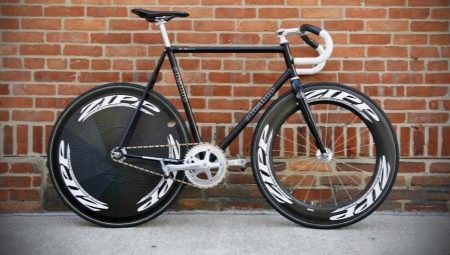
Track racing is included in the program of the Olympic Games, and therefore the interest in track bikes is not accidental. Racing models are gaining more and more fans and are becoming incredibly popular not only in the sports environment.
Appointment
The track bike is a sports model designed for track racing. But judging by the latest trends, more and more hobby cyclists are choosing these fast and lightweight models over road and city bikes.
They are especially popular in Japan, Canada and the USA, where people acquire them for daily movement in metropolitan areas.
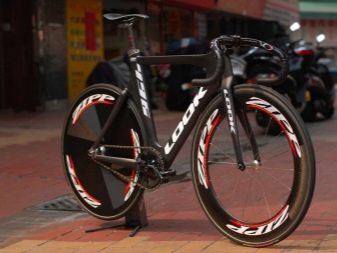
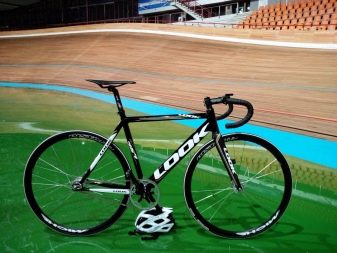
This is due to the low weight and high maneuverability of track models, as well as their ability to reach speeds of up to 50 km / h. Moving in this mode, the cyclist organically fits into the city stream and, thanks to its compactness, deftly maneuvers between cars standing in a traffic jam. Due to the ability to move in urban conditions at the speed of a car, many motorists are happy to change to a "track", since the developed cycling infrastructure of most foreign cities ensures complete safety of such movement.

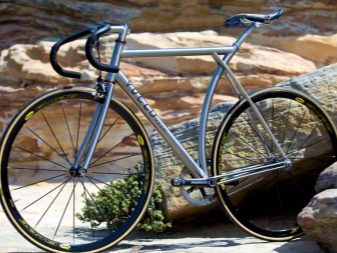
Distinctive features
Despite the visual similarity, track bikes differ significantly from road bikes.
- The weight is 7-9 kg, which makes them the lightest adult bicycles.
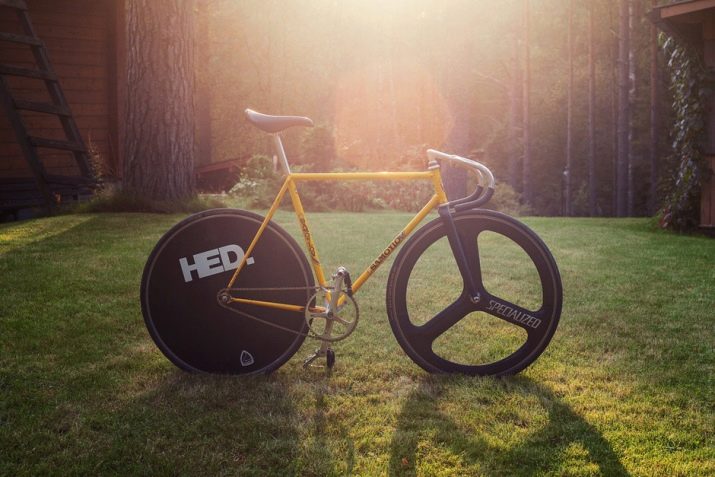
- The frame has large tilt angles, which affects the geometry of the bike and significantly improves its aerodynamic performance.

- On track models, there is only one fixed blind gear, due to which the pedals do not have the ability to run freely and rotate until the bike comes to a complete stop.And although some modern models have the option of installing a freewheel, professional track bikes are produced exclusively with one deaf gear. This design allows you to quickly reach maximum speed and maintain it throughout the entire distance.
For professional racers, cadence often reaches 120 rpm and speeds in excess of 90 km / h. Constantly spinning pedals allow you to easily overcome long climbs without spending a lot of forces on acceleration.
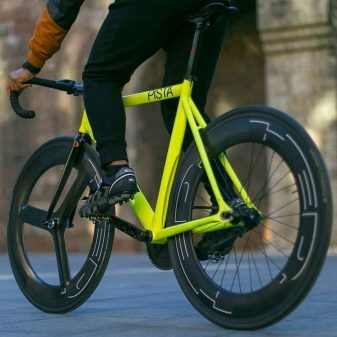
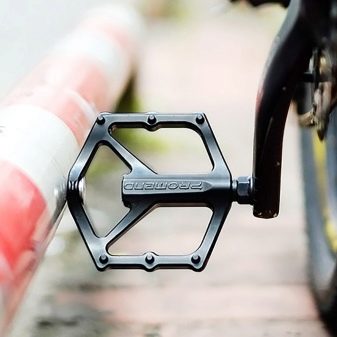
- Track bicycles are equipped with plate or plate-block straight chains with a pitch of 24.5x5 mm.
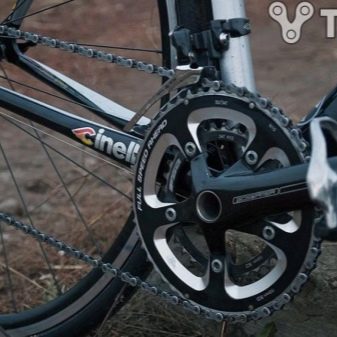
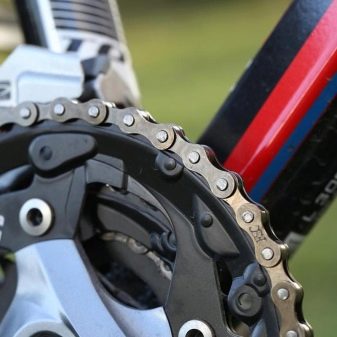
- Sports track bikes don't have brakes and in order to come to a complete stop, the cyclists are forced to go through another circle, gradually slowing down the cycle of the bike. Emergency braking is carried out through skidding - a physical effort aimed at blocking the pedals, and occurs with a fairly strong skid.
However, the latest models began to equip with a front hand brake, which is so necessary when using it in urban environments. Professional racing models are not fitted with brakes, thus minimizing the overall weight of the bike.

- Track models have a very short base compared to road models. (the distance between the centers of the front and rear wheels), which requires an increase in the rigidity of the frame. In addition, their carriage assembly has a higher location, which prevents the pedals from touching the inclined track surface when cornering.

- The rear frame stays are equipped with special dropouts with a horizontal notch, allowing you to adjust the chain tension by changing the position of the rear wheel axle.

- Most of the track models are available in 622 or 700 mm wheels according to the Etrto system. The wheels are equipped with single-tube tires up to 40 mm wide. The spokes are often replaced with a layer of thin carbon fiber, which significantly reduces air resistance and contributes to increased aerodynamic effect.
Instead of quick-release clamps, a more reliable nut connection is used to fix the wheels, since their replacement is required very rarely.
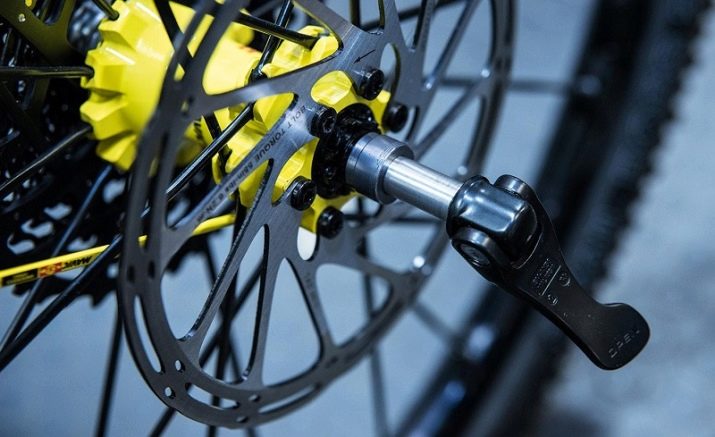
- The track pedals are equipped with special toe clips. Unlike road "contacts", leg fixation is provided by straps, which are individually adjustable for each rider.
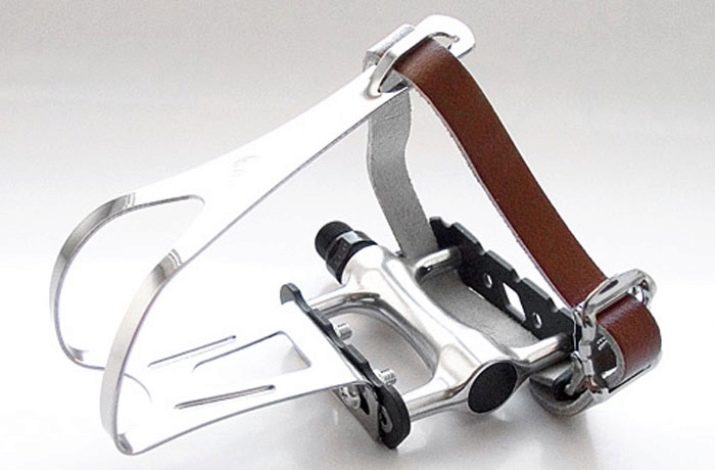
- The steering wheel of a track bike resembles a ram's horn. Combined with a high-lift saddle, it allows the rider to lean as low as possible and develop high speed. On some professional models designed for certain disciplines, a curved V-shaped aerobar bar is installed. During the race, the cyclist leans on him with his elbows, improving the aerodynamics of the bike.
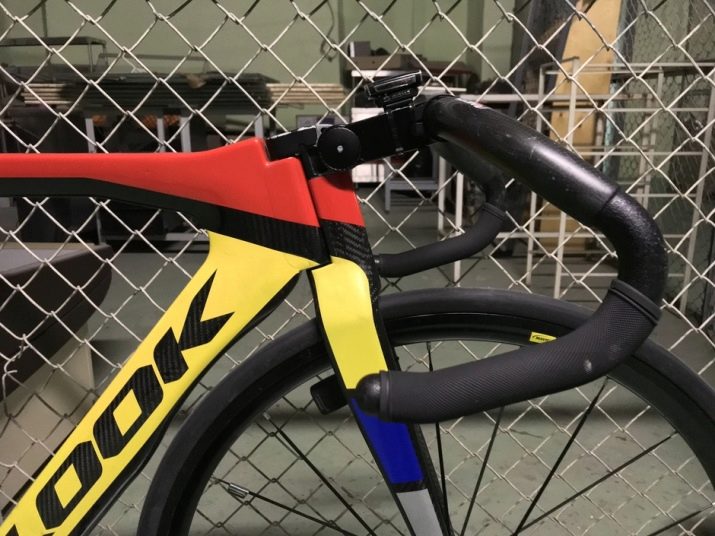
Manufacturing material
The performance of a track bike is largely dependent on the material of the frame. For production, carbon, aluminum and titanium are used.
- Bicycles with an aluminum frame are characterized by instability to heavy loads and a relatively short service life. Some models are fitted with carbon forks, which soften the structure a lot.

- Models with carbon frame much stronger than their aluminum counterparts. The carbon alloy provides the required structural rigidity, but at the same time contributes to a softer ride. These bicycles represent the largest group, they are popular among amateurs and novice athletes.
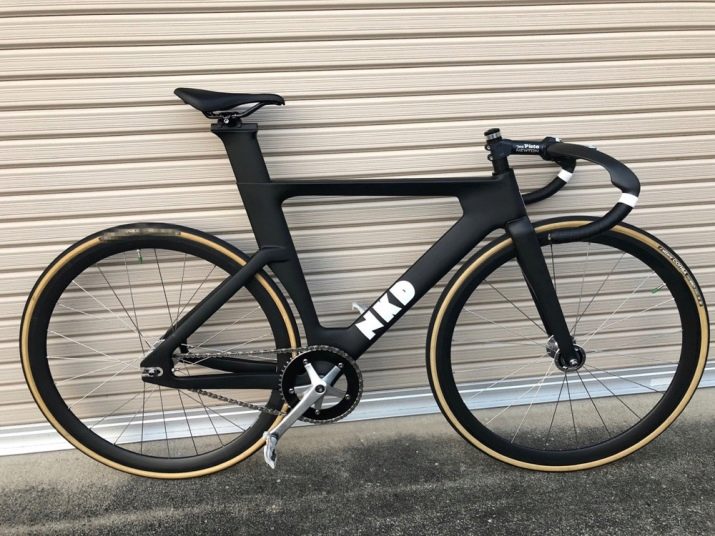
- Titanium frame bicycles are expensive and therefore not widely used. Titanium frames are very strong, durable, lightweight and fit on highly professional models.
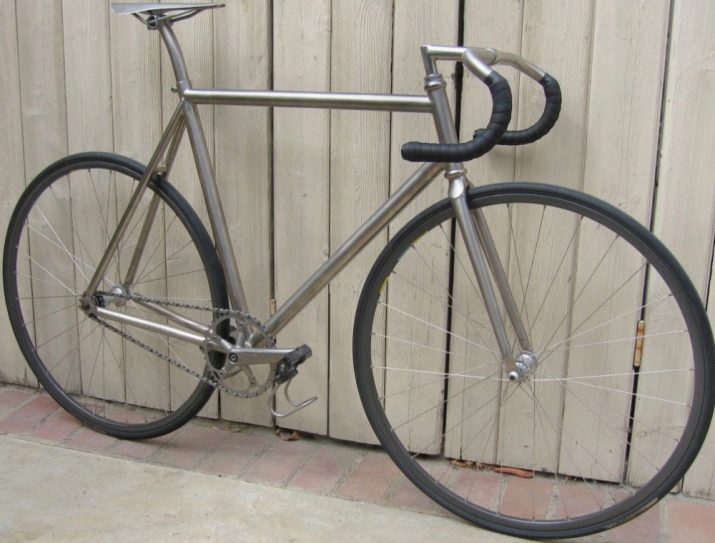
How to choose?
The choice of a track bike depends entirely on the conditions in which it is supposed to be used. If it is bought for daily trips around the city, then it is better to opt for models equipped with a hand brake. This will help avoid accidents and make using the bike comfortable and safe.
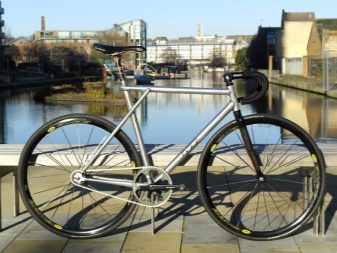
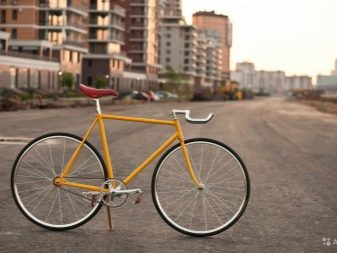
When choosing a model for track racing, first of all focus on specialization: for each of the disciplines they acquire a strictly defined model... This is not difficult to do, since there is a pattern for each type of race. On this basis, distinguish sprint and tempo models as well as bicycles for racing for the leader.
The first two types have some similarities, but differ in the position of the handlebar and saddle, as well as the base distance and dynamic properties of the frame. Leader models are equipped with a different frame configuration, have a backward-curved fork, a modified saddle position and a reduced diameter of the front wheels.
This design helps to maintain aerodynamics in the situation of pursuing a leader and allows you to achieve high speeds.
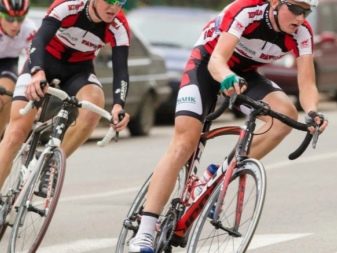
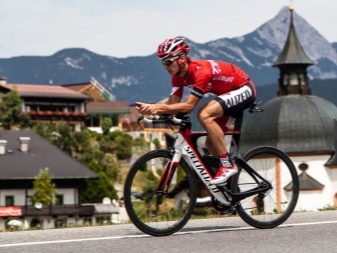
Another selection criterion is bike size. In order to choose a bike by height, you need to multiply the leg length by 0.56, and then divide the result by 2.54. The resulting value will determine the size of the frame. For teenagers, buy teenage models with 24 "wheels and a frame no more than 13".

You will learn even more about choosing a track bike by watching the following video.









How much do track wheel rims weigh?
Danila, for example, Fast Forward carbon track wheels: front wheel weight: 1200g, rear wheel weight: 1275g, weight (wheelset): 2475g.